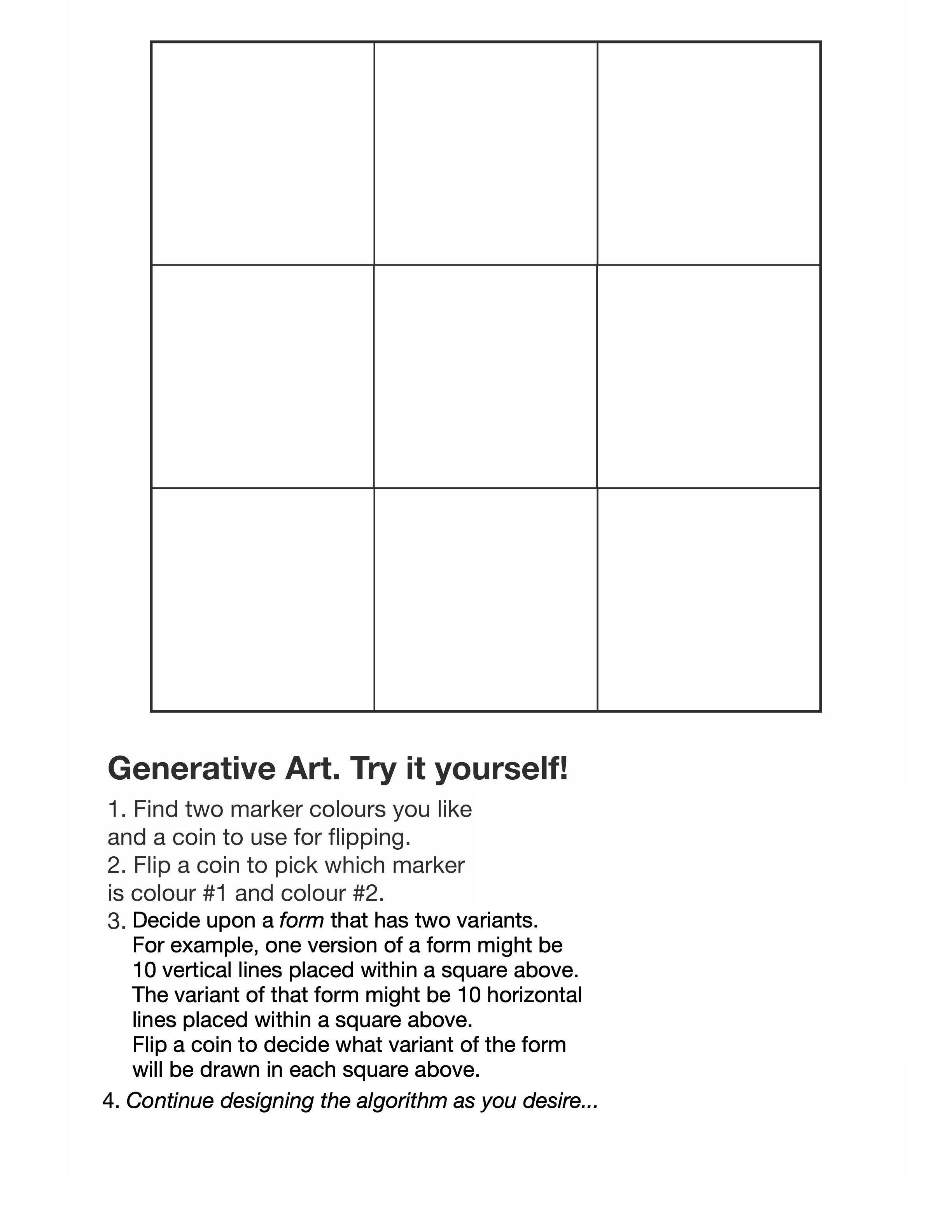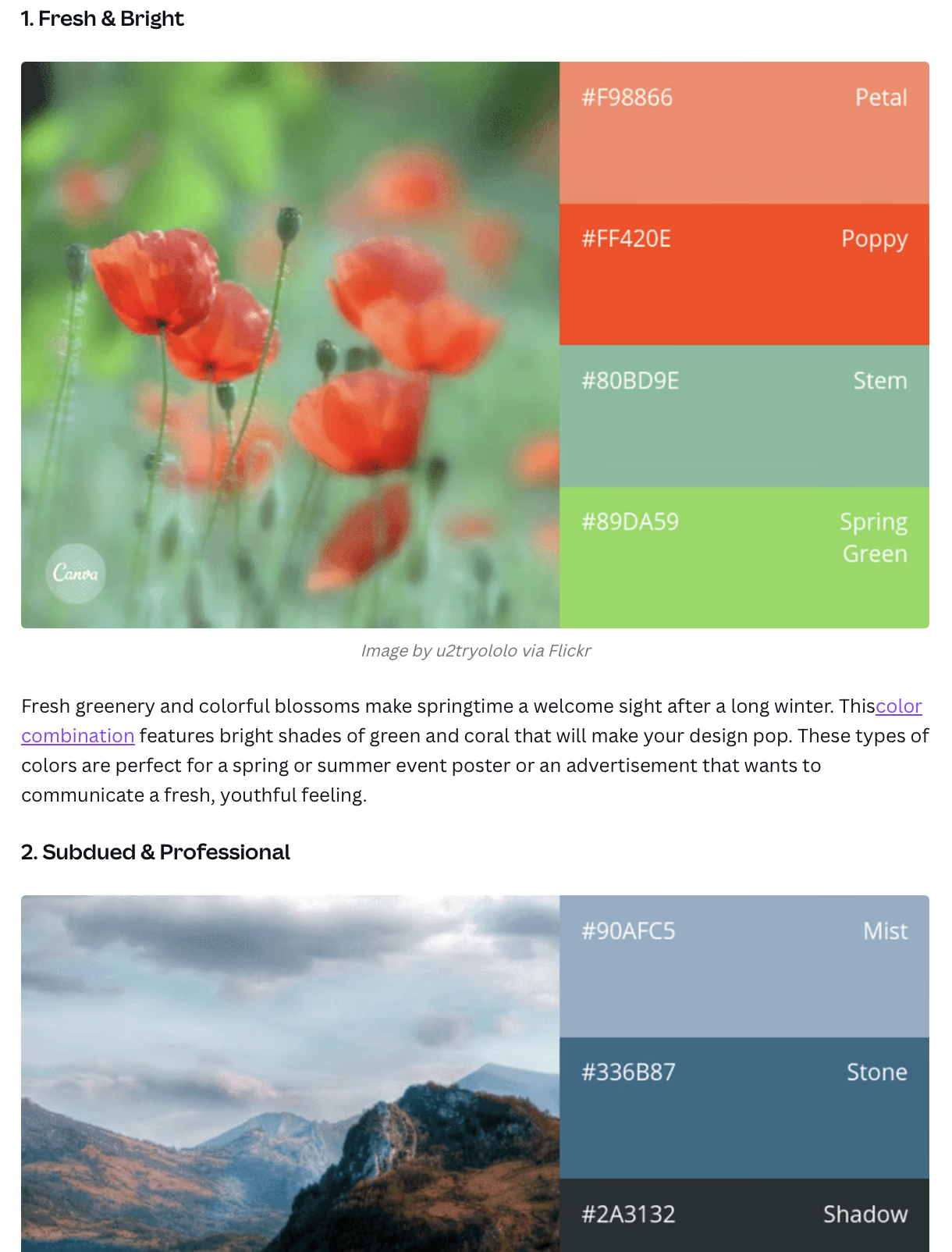Creating Original Generative Art
Objectives
- Design a simple algorithm, or recipe, to create a pleasing visual pattern.
- Make use of sequence, loops, selection statements, and functions to implement your algorithm in code.
What is generative art?
Stephen Boyd describes generative art as follows:
Generative Art originated in the early 1960s with pioneering artists such as Vera Molnár and Manfred Mohr. It has roots in the early computer graphics and music experiments of that era. While it is typically associated with computers and code, the underlying principles of rules and constrained randomness lend it to any number of artistic mediums.
How do you make generative art?
Again, let us defer to Stephen Boyd:
To create a generative work of art, the artist defines a set of rules that are set into motion with some degree of randomness contributing to the completed artwork. A simple example is to create a 4x4 grid where each square is filled with varying colours based on inputs such as coin flips, or dice rolls. The resulting artworks are unique and original each time by following the same rules.
To fully realize a generative work of art, the artist must surrender some control over the final output to random chance. This uncertainty in the final output challenges ideas of authorship and explores the relationship between human creativity and machine-like processes.
Design an algorithm
Use the hard-copy of this page that has been provided by Mr. Gordon to develop your own algorithm for generative art:

Fill in steps to complete an algorithm of your own design.
You are encouraged to change step 3 to decide upon your own form.
Other possible forms might be a circle, a semi-circle, some other polygon...
Implement your algorithm
First, implement your algorithm on paper using pencil crayons or markers.
Next, review your work on paper. Think about where you might use loops or functions. Add those thoughts as annotations (writing) on your paper-based design.
Finally, try using code to implement your algorithm.
Make a new playground named Original Gen Art.
Refer to the playground you wrote when completing the intro to generative art activity as you write the code to implement your own algorithm.
Consider color
You might wish to browse and select pleasing color combinations that you can then use when implementing your algorithm in code:

Portfolio update
As you work on this activity, add portfolio posts to Notion when you feel that you have good evidence of progress against one of the course learning goals.